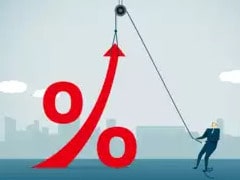
Despite a steep increase in lending rates, loan growth in India has reached an 11-year high for the FY’23, according to the latest data released by the Reserve Bank of India (RBI). The data shows that bank credit grew by 11.3% year-on-year as of March 25, 2023, compared to the same period in the previous fiscal year.
The growth in lending comes despite a sharp increase in lending rates by banks and financial institutions in response to rising inflation and other economic challenges. The RBI has raised interest rates several times in recent months in an effort to control inflation and support economic growth.
The increase in lending rates has been driven by a variety of factors, including rising global oil prices, a weaker rupee, and increased government borrowing. Many banks have also been tightening their lending standards in response to concerns about rising non-performing assets (NPAs).
Despite these challenges, however, the latest data shows that loan growth in India has been strong in the current fiscal year. This is largely due to the strong demand for credit from businesses and individuals, who are looking to fund investments and other activities.
The growth in lending has been particularly strong in the retail segment, where banks have been offering a range of products such as personal loans, credit cards, and housing loans. The housing loan segment has been particularly strong, with many banks offering competitive interest rates and other incentives to attract customers.
The growth in lending has also been driven by the government’s efforts to support economic growth through various policy measures. The government has introduced a range of measures to boost investment and create jobs, including tax incentives for businesses and infrastructure projects.
The government has also launched several initiatives to support small and medium-sized enterprises (SMEs), which are seen as a key driver of economic growth in India. The RBI has also introduced a range of measures to support SME lending, including setting up a dedicated fund to provide credit to small businesses.
Despite the strong growth in lending, however, there are concerns about the quality of the loans being extended by banks. Rising NPAs and other challenges have raised concerns about the ability of banks to manage credit risk effectively.
The RBI has been working to address these challenges by introducing a range of measures to improve the quality of bank lending. These measures include strengthening the regulatory framework for banks, increasing the transparency of lending practices, and encouraging banks to adopt more conservative lending standards.
Overall, the strong growth in lending in the current fiscal year is a positive development for the Indian economy. It reflects the strong demand for credit from businesses and individuals, and it suggests that the government’s efforts to support economic growth are bearing fruit.
However, there are also risks associated with the growth in lending, particularly in the context of rising inflation and other economic challenges. It will be important for banks and financial institutions to manage credit risk effectively and to maintain appropriate lending standards to ensure the long-term sustainability of the lending boom. Additionally, banks and financial institutions should also develop strategies to manage the risks associated with changing customer preferences, shifting regulatory landscape, emerging technology-enabled channels and other industry trends. Finally, it is important for all stakeholders to understand that a successful lending business requires a holistic approach and an integrated view of risk management.
As the Indian economy continues to navigate these challenges, it will be important for policymakers, regulators, and market participants to work together to ensure that lending growth remains strong and sustainable, and that the benefits of this growth are shared widely across society.









